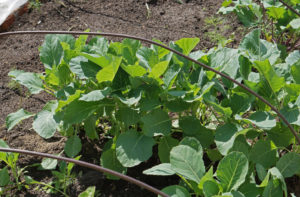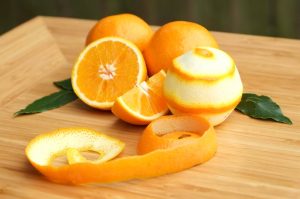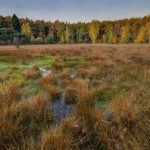Clay soil
Clay soils are difficult for gardening. They swamp in the autumn and dry up in the summer, the plants suffer from excess, then from lack of water. Real clay soil, heavy and sticky, is often simply impossible to dig. This is the result of its structure: clay consists of small mineral particles that water binds into an inert mass. Accumulated moisture causes soaking of the root system of plants and their death in winter. Spring clay is too cold, and the roots of herbaceous perennials, not to mention bulbous, it quickly rot. In addition, the plants are threatened with starvation: the vegetation of the above-ground part has already begun, and the roots are still sleeping in the frozen solid earth.
How to determine clay soil
- Walk on the site after the rain-the wet clay soil will instantly stick to the soles, and the legs will begin to spread in different directions.
- Carefully consider a sample of humus soil layer-small rusty spots indicate waterlogging from the surface. The most striking feature is the bluish hue of clay already at a shallow depth.
- Take a small amount of soil, moisten with water and roll into a string. If the cord can be rolled into a tight smooth ring, the soil is clay.

If the subsoil on the site is sandy, with careful processing, the clay will gradually turn into good garden land, suitable for almost all plants.
Clay subsoil, high groundwater
The soil in such areas can be any, the whole problem is the weak power of its layer and waterproof clay subsoil. Waterlogging occurs due to groundwater, which is delayed on the underlying water-resistant horizon. These are very difficult areas, unsuitable for gardening.
To reveal the availability of problems, dig hole depth 1.5 flushed — on surplus moisture will point cold gray tone with rusty spots in the lower parts of soil. Check the level of the groundwater. For this purpose in the beginning — the middle of July, in the absence of big rains, measure in a hole distance from a soil surface to level of the water standing there. This is the groundwater level.
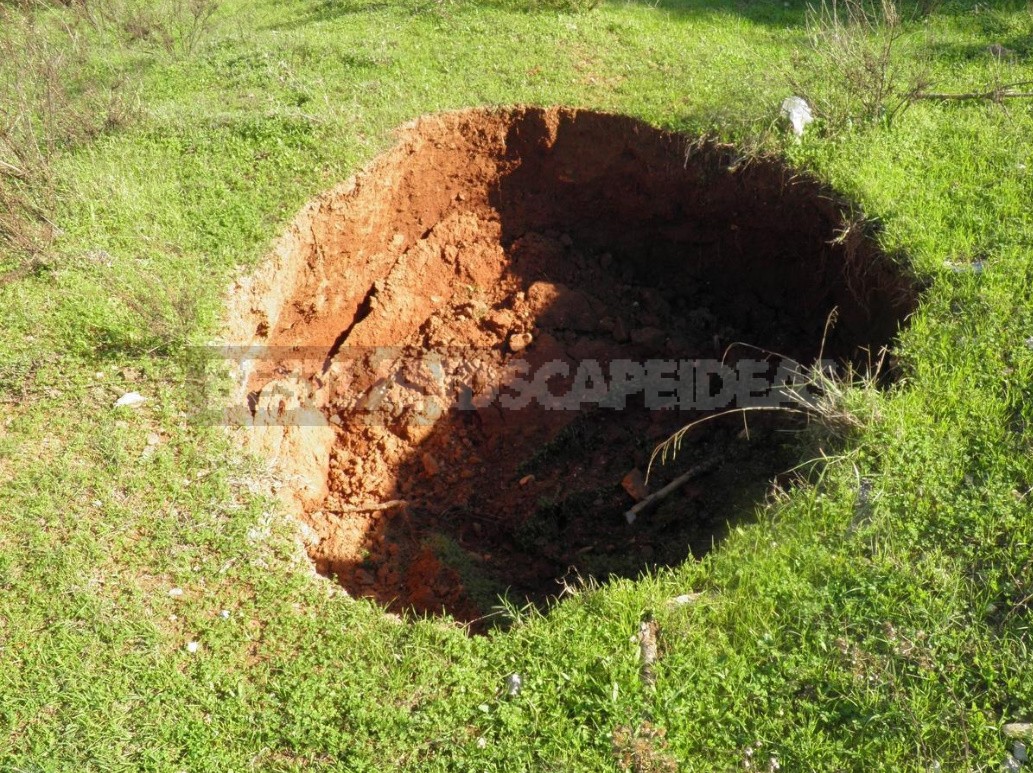
If the distance is less than 1 m-most trees, shrubs and large herbaceous perennials will die. If the water is at the bottom of the pit, then only the trees are in danger. It is better to dig several holes in different corners of the site and check the groundwater level in them.
On flat areas, small closed depressions may occur, sometimes almost invisible to the eye, where the water flows and where it is retained. This condemns most of the plants living there to certain death. The lowlands are even worse. In addition to the fact that all the surrounding waters at any opportunity are here, cold air, being heavier than warm, also settles in the lowlands.
When planning a drainage system, consider not only the relief of the surface, but also the relief of the clay subsoil. It can go with a slope, it must be used when removing excess water.
Option 3-floodplain flooded meadows
Floodplain meadows are very rarely part of garden plots, as the coastline of natural reservoirs is public property. However, many owners of land bordering the coast, develop the Gulf coast, rivers or lakes.
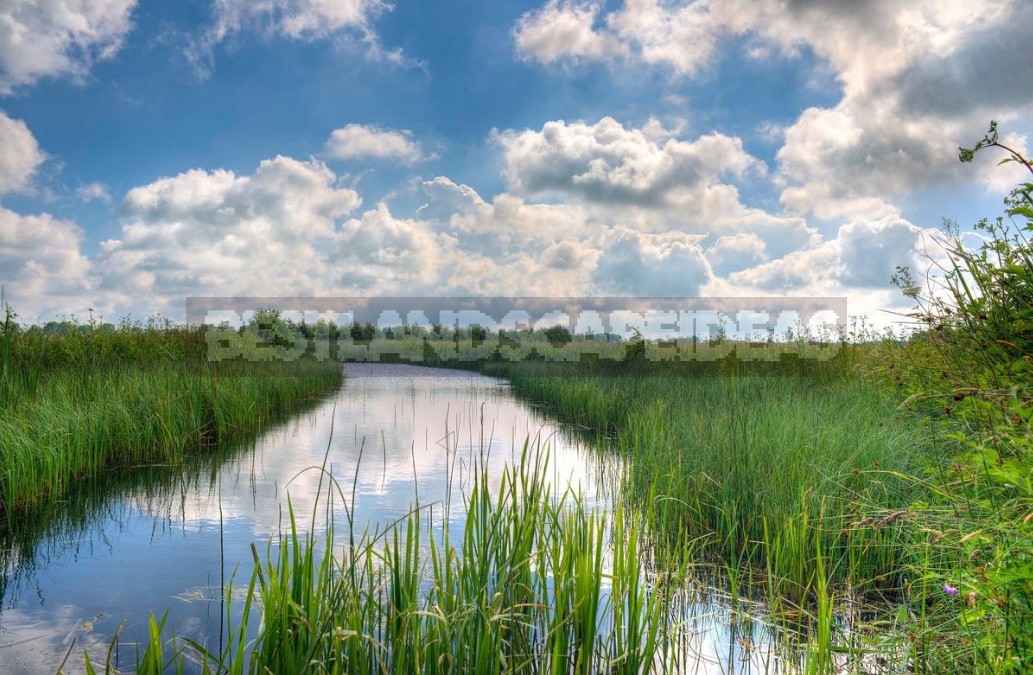
In case of flooding, flood water inundated meadows, annually enriched with minerals from the silt. Plants on them grow powerful, but their species composition is not rich and depends on the duration of flooding. Usually a black humus layer is formed under the meadow vegetation on clay subsoil, which after drainage of the site is perfect for planting garden plants.
Floodplain meadows are relatively slowly overgrown with bushes and trees, they are clogged with fat grasses. The duration of flooding determines the degree of waterlogging in the soils, up to the formation of swamps. To prevent flooding of the site in high water is possible with the construction of a dam.
Cons of boggy soil
Disadvantages of the wetland a lot, they often become an obstacle for gardening and construction.

- Poor air exchange
With excessive moisture, the air needed to breathe the roots is displaced by water, which causes most plants to suffocate and can die. For the same reason, there is a sourness of the soil, toxic substances are formed that inhibit the development of not only bacteria, but in General all living things.
Waterlogging of soils can be short-term, long-term or permanent. Depending on the duration of this period, the oppression or death of almost all garden and ornamental trees and shrubs. If the peat is dry, it does not get wet, if wet – do not dry.
- The high acidity of the soil
Swamp soils have a very high acidity, most cultivated plants do not tolerate it.
- Thermal insulation properties of peat
Peat is a heat insulator, and this is its most insidious property. On a shrub or tree, the foliage is already blooming, and the roots of the plant have not yet awakened, because they are chained by ice — as a result, the plants die of hunger.

- The instability of the soil
Peat is unstable: swell and shrink depending on the degree of moisture, and eventually condense, which is especially evident in the spring at the time of thawing. This circumstance is essential in the construction of the Foundation, is reflected in the ways of laying slabs paths, complicates the construction of retaining walls and rocky gardens.
- Overcooling
Clay soils are cold, structureless, plants on them often freeze out. Cold and damp air, stagnating in the lowlands in winter, has a detrimental effect on the buds of trees and shrubs. In spring, in low places there is a high probability of frost-experienced gardeners say that the temperature in the lowlands is 2-6°C lower than in the surrounding area.
- Problems with selection of assortment for planting
Woody plants, with the exception of a few, do not grow on soils with high groundwater standing. Lawns arranged without taking into account temporary flooding, although by all the rules, vyprevayut and filled with weeds. In addition, in the summer peat soils unpleasant dust, quickly overgrown with weeds.
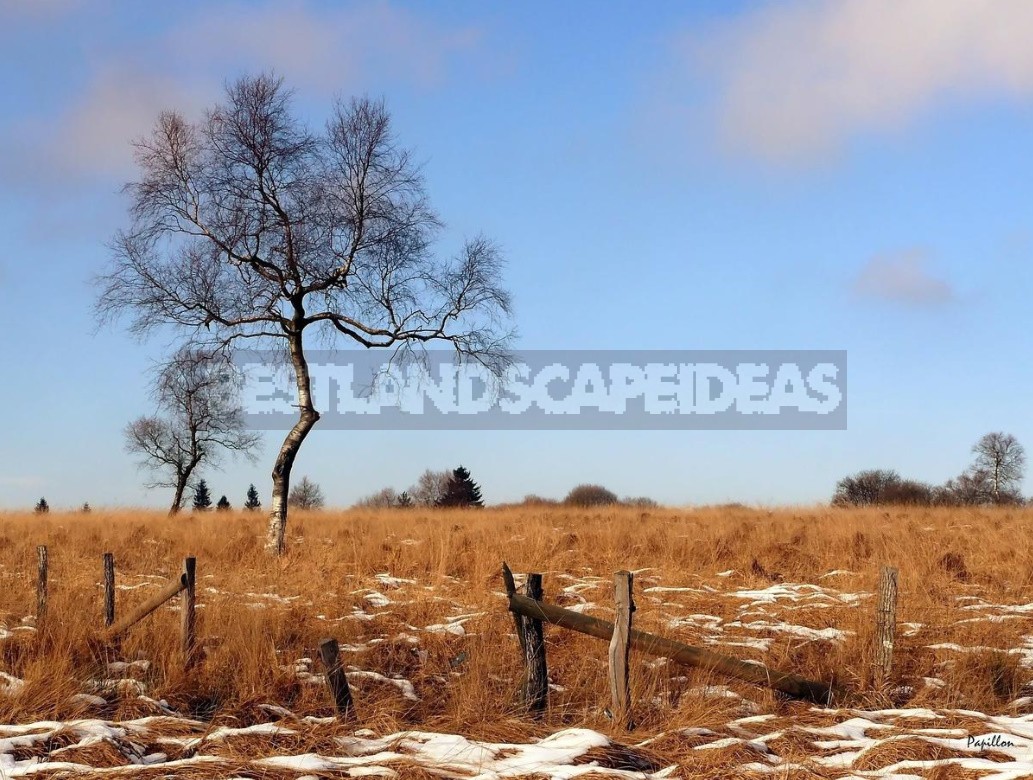
On acidic soil, there may be an increased attack of plants: soaking, death from frost, the development of diseases and pests – and for no apparent reason. The fact is that at a pH of 3.5-5.5, iron, aluminum and manganese have excessive, toxic levels of concentration. But the assimilation of phosphorus, potassium, sulfur, calcium, magnesium, molybdenum by plants is difficult.
Advantages of wetland soil
But even in this situation, it turns out, you can find certain advantages, and wetlands have their advantages.
- Soil fertility
Waterlogged soils are potentially more fertile than, for example, dry sandy soils. After drying and deoxidation of a swampy soil become fertile “black soil of the North”. Floodplain meadows during flooding are enriched with minerals due to the influx and deposition of silt particles.
- Water as a resource
Excludes such a time-consuming event as watering. Excess water can be sent to a ditch or pond and used for technical needs. On clays it is possible to make a natural reservoir without special expenses.
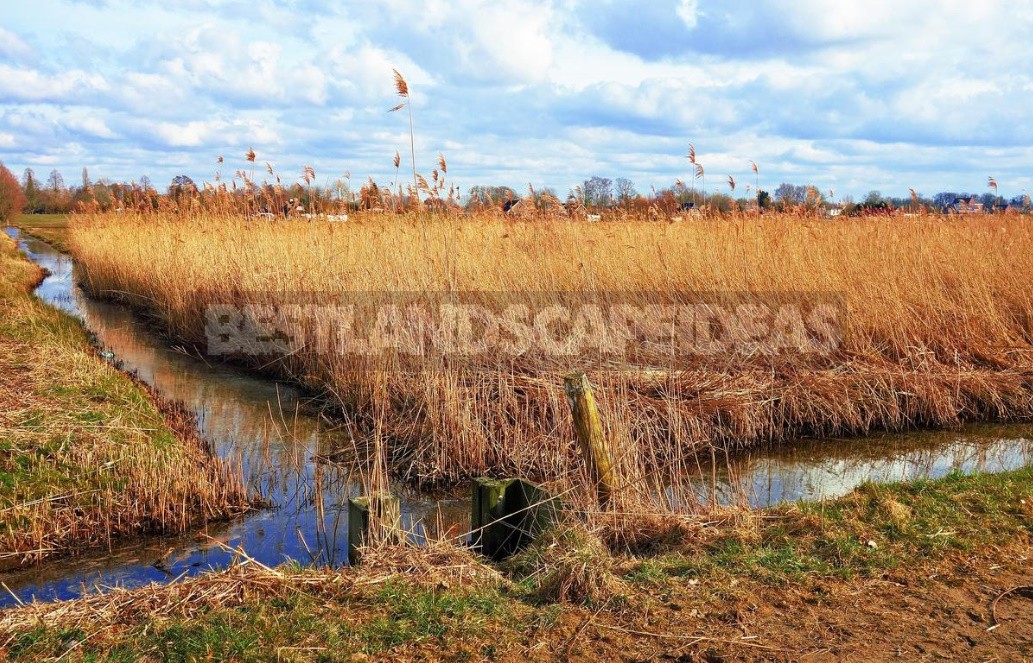
- Original landscape design
A piece of sphagnum swamp can become a reserve of rare plants: orchids and other exotics. On peats, you can do the original paving with wood spits or paving with a wooden bar, which will last longer than on conventional garden soils.


